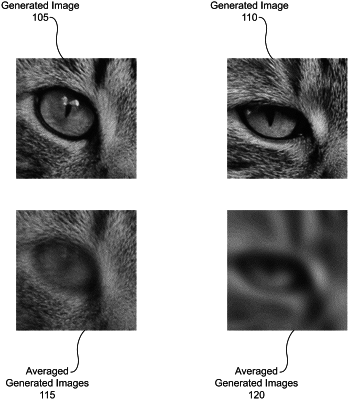| CPC G06T 3/4046 (2013.01) [G06T 3/20 (2013.01); G06T 3/4053 (2013.01); G06T 3/60 (2013.01); G06T 2200/12 (2013.01)] | 20 Claims |

|
1. A computer-implemented method for synthesizing content, comprising:
receiving, at a neural network model, low resolution input data that is processed by a sequence of stages according to a latent code to produce intermediate data and a last stage in the sequence of stages produces the synthesized content comprising fine details corresponding to fine features, wherein the processing, for each operation performed in the sequence of stages that applies a pointwise nonlinearity to intermediate data at an original resolution, comprises:
upsampling the intermediate data to produce increased resolution intermediate data;
applying the pointwise nonlinearity to the increased resolution intermediate data to produce processed increased resolution intermediate data, wherein coarse features of the intermediate data control positions of the fine features of the increased resolution intermediate data; and
downsampling the processed increased resolution intermediate data to produce processed intermediate data.
|